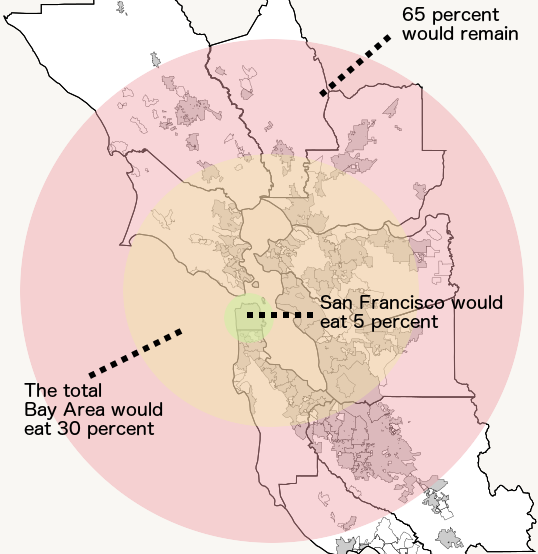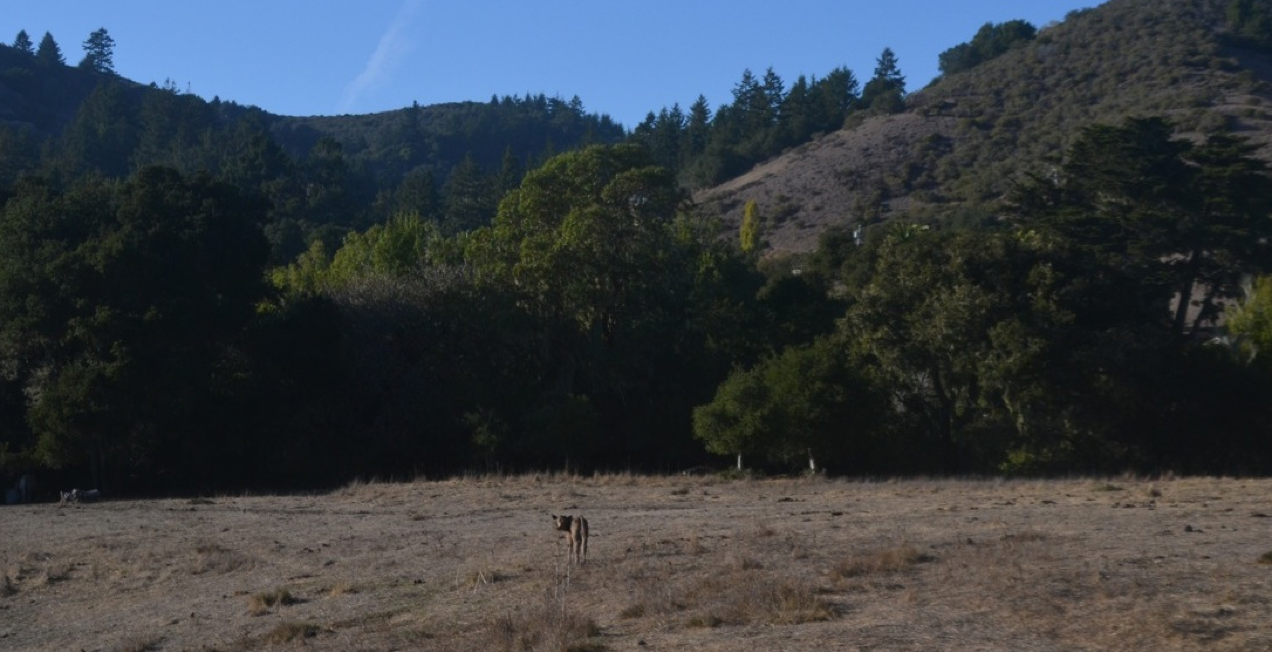Wendy Millet ![]() directs TomKat Ranch, a property that plays home to grass-fed cattle, conservation research and educational programs. Founded by retired hedge fund manager Tom Steyer and his wife Kat Taylor, the ranch acts as both a working cattle operation and an incubator for new ideas in agriculture, and has been getting positive national attention.
directs TomKat Ranch, a property that plays home to grass-fed cattle, conservation research and educational programs. Founded by retired hedge fund manager Tom Steyer and his wife Kat Taylor, the ranch acts as both a working cattle operation and an incubator for new ideas in agriculture, and has been getting positive national attention.
“We’ll try just about anything that seems reasonably likely to be either a game changer or a catalyst for change in the business of grass-fed producers,” Millet said. Past ideas have included solar-powered fences, water usage measurement, and inviting an ecologist to monitor the ranch.
One of the ranch’s goals is to encourage healthy production in a region where food is prized. “The San Francisco Bay Area foodshed just screams for well-managed land that produces a healthy product that goes to local consumers,” Millet said.
To that end, the ranch has hosted community conversations amongst ranchers to share best practices, and hosts events on the property to keep the dialogue going. In early December, TomKat partnered with the Markegards to host conservationist Allan Savory for a sold out talk on land management with cattle.
Allan Savory event at TomKat Ranch.
“We don’t need to change everybody. There’s probably going to be large-scale conventional ranching happening simultaneously, we just want to make sure there is a sustainable grass-fed alternative,” Millet said.
Millet hopes that one day the region will look something like New York’s Hudson Valley or other areas with “really healthy land management” and thriving local food systems.
Ed Weeks ![]() farmed land around Pescadero long before sustainability was a term anyone used in conversation. He agrees with Millet’s push for local agriculture, but worries that today’s generation of farmers and ranchers will struggle with land prices.
farmed land around Pescadero long before sustainability was a term anyone used in conversation. He agrees with Millet’s push for local agriculture, but worries that today’s generation of farmers and ranchers will struggle with land prices.
“We’re going to have to have food to eat,” he said. “But with organic farms, you have to farm more land to have more income. The stuff I was farming for six or seven dollars an acre, now it’s worth millions.”
Even as land prices rise, research is showing that the food grown in places like San Mateo County could, in fact, sustain the region as a whole.
A 2006 study from the American Farmland Trust said that, with the exception of some staple crops like corn and wheat, the region’s farms and ranches produce enough food to feed the entire Bay Area.

The percentage of local food consumption, if the Bay Area ate from only local suppliers.
Daniel Olstein directs land stewardship policies at POST. He says the trust wants to see the rural county remain agricultural and a part of the Bay Area food ecosystem. Like the district, the trust has focused on protecting not just land, but the agriculture that takes place on it. It is offering new types of easements for farmers to ensure their land stays in active agricultural use.
“The way we think we can help move the needle on agriculture is by increasing the number of active operations on our land,” he said.
For Millet’s part, she’s encouraged by the conservation grazing efforts in open space land, although she can see both sides of the debate. Recreational users need to understand the role that cattle can play on public land, she thinks. “When people give money to POST, they also need to smile when crossing a cow in the path, and understand that it is not destroying the landscape.”
But ranchers also need to see the value of the open space groups, she noted.
“Without POST and Mid-Peninsula there 30 years ago, people would be sorry to see what the coast would like today,” she said.
Credits:
Top image: Pescadero farmer Ed Weeks reviews his agricultural property maps from the 1950′s.
Images: Bay Area map courtesy of Arkyan. Data courtesy of the American Farmland Trust.
Want to learn more about cattle grazing in San Mateo County? Take a look at the Further Reading page.

